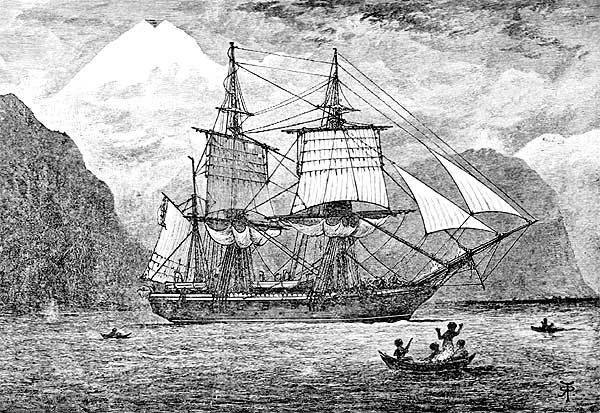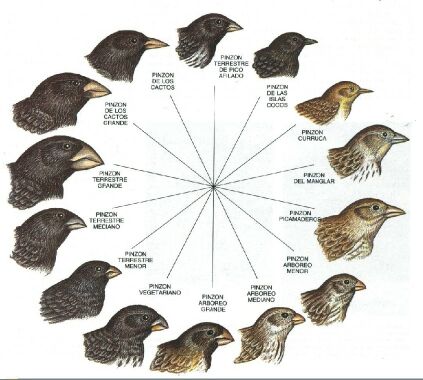 The Voyage of the Beagle: After studying at Cambridge in 1831, Darwin ventured to 22 years on the ship HMS Beagle, with Henslow's recommendation, ivestigar for a scientific expedition around the world. The investigation lasted 5 years and took the hydrographic data, geological and climatic conditions in South America and many other lugares.Las investigations have led to the development of Darwin's theory of natural selection.
The Voyage of the Beagle: After studying at Cambridge in 1831, Darwin ventured to 22 years on the ship HMS Beagle, with Henslow's recommendation, ivestigar for a scientific expedition around the world. The investigation lasted 5 years and took the hydrographic data, geological and climatic conditions in South America and many other lugares.Las investigations have led to the development of Darwin's theory of natural selection.
The journey began in 1831 and lasted two years ended five years later, on 2 October 1836 to Falmouth.Una the most spectacular adventure of a lifetime, who discovered exotic landscapes, was held on ending journey of exploration in the theory of the origins of the species and the origin of his book tour hombre.En find the number of animals and plants that were the subject of recognition and analysis, as the inhabitants of the exotic places of their attitudes, aspects of their physical and their traits, their habits and lifestyles.

It was the most important in the exploration of the Galapagos Islands, off the coast of ecuador.Parte of their research is based on the tip of the finches that obtains different forms in different islands, depending on the type of food, if you want how are these aves.Antes to the Galapagos Islands, Charles Darwin had the opportunity to see a field of fossils on the coast of Argentina. This is where the British naturalist saw the first signs he later admits to formulate his theory on the origin and evolution of species.

Charles Darwin to begin their journey on the Beagle bones were found fossils of large mammals in South America, in addition to the exploration of birds (the famous finches), large lizards and turtles, whose profile (phenotypic) has changed a regulation to another because of reproductive isolation.
H.M.S. Beagle
The H.M.S. Beagle was a ship of the British Royal Navy, the ship on which Charles Darwin has a travel information are as follows:

Your History:
It is a kind of boat Cherokee
Type: sloop-berganín
Launched: May 11, 1820
Assigned in 1820
Low: Transferred to the Coast Guard Service in 1845
Fate: sold for scrapping in 1870.
Its general features are:
Displacement: 235t
242t on the second trip
Length: 27.5 m
Beam: 7.5 m
Draft: 3.8 m
Armament: 10 guns which was reduced to 6 in their travels to save space
Propulsion: sails
Crew: 120 and 65 +9 warship supernumeraries in his second trip.

Charles Darwin to begin their journey on the Beagle bones were found fossils of large mammals in South America, in addition to the exploration of birds (the famous finches), large lizards and turtles, whose profile (phenotypic) has changed a regulation to another because of reproductive isolation.
H.M.S. Beagle
The H.M.S. Beagle was a ship of the British Royal Navy, the ship on which Charles Darwin has a travel information are as follows:

Your History:
It is a kind of boat Cherokee
Type: sloop-berganín
Launched: May 11, 1820
Assigned in 1820
Low: Transferred to the Coast Guard Service in 1845
Fate: sold for scrapping in 1870.
Its general features are:
Displacement: 235t
242t on the second trip
Length: 27.5 m
Beam: 7.5 m
Draft: 3.8 m
Armament: 10 guns which was reduced to 6 in their travels to save space
Propulsion: sails
Crew: 120 and 65 +9 warship supernumeraries in his second trip.

No hay comentarios:
Publicar un comentario